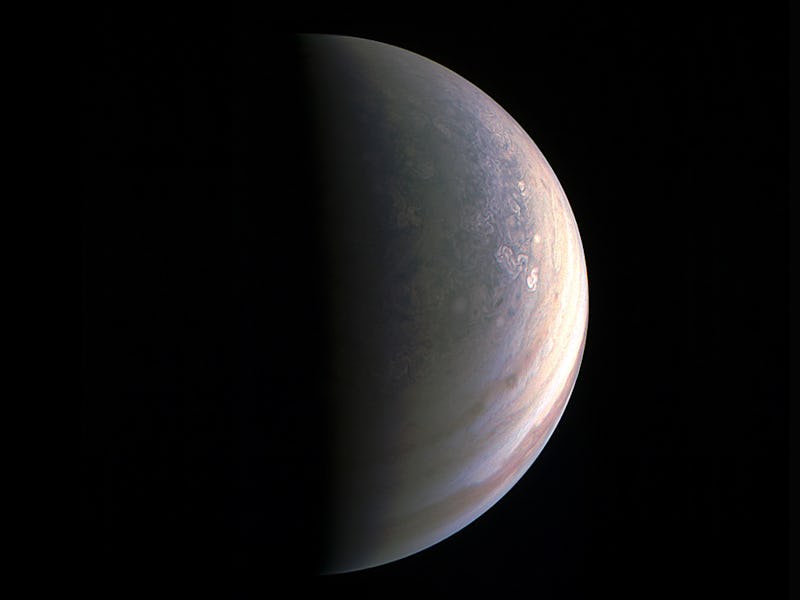Jupiter's North Pole Is "Nothing We Have Seen or Imagined"
"It looks like nothing we have seen or imagined before."

NASA has already released one image of Juno’s close encounter (2,500 miles away) with Jupiter, but on Friday the agency released more pictorials of the solar system’s largest planet — and they depict a gas giant with a north pole that is unlike anything scientists ever imagined.
“First glimpse of Jupiter’s north pole, and it looks like nothing we have seen or imagined before,” said Scott Bolton, principal investigator of Juno from the Southwest Research Institute in San Antonio. “It’s bluer in color up there than other parts of the planet, and there are a lot of storms. There is no sign of the latitudinal bands or zone and belts that we are used to — this image is hardly recognizable as Jupiter. We’re seeing signs that the clouds have shadows, possibly indicating that the clouds are at a higher altitude than other features.”
Juno was about 48,000 miles (78,000 kilometers) above Jupiter's polar cloud tops when it captured this view, showing storms and weather unlike anywhere else in the solar system.
This infrared image from Juno provides an unprecedented view of Jupiter's southern aurora. Such views are not possible from Earth.
All eight of Juno’s science instruments were running and collecting data. Some, like the Jovian Infrared Auroral Mapper (JI-RAM), got to look at Jupiter in infrared and reveal where the hot spots of the planet are located and depict the southern aurora.
More eerily, Juno’s Radio/Plasma Wave Experiment (Waves) recorded some strange radio emissions projected from above the planet.
“Jupiter is talking to us in a way only gas giant worlds can,” said Bill Kurth, co-investigator for the Waves instrument from the University of Iowa, Iowa City. “Waves detected the signature emissions of the energetic particles that generate the massive auroras which encircle Jupiter’s north pole. These emissions are the strongest in the solar system. Now we are going to try to figure out where the electrons come from that are generating them.”